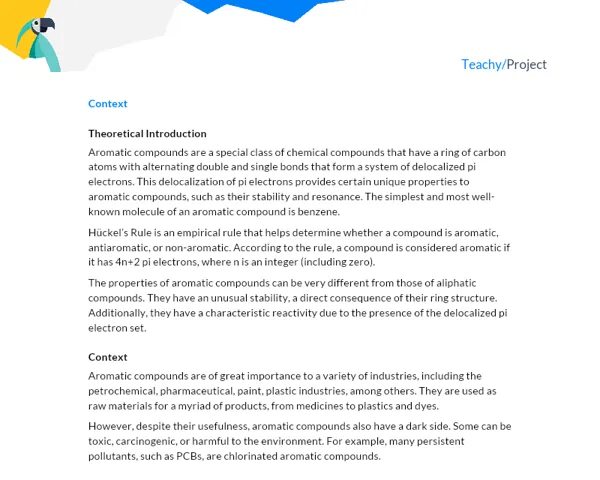Contextualization
Theoretical Introduction
The Gibbs free energy is a key concept in thermodynamic chemistry that refers to the maximum reversible energy of a thermodynamic system that is available to do useful work. In other words, Gibbs free energy is the energy that can be converted into work at constant temperature and pressure – the normal conditions for chemical reactions.
The term was initially developed by the American physical chemist Josiah Willard Gibbs, who significantly influenced the development of theoretical physics and chemistry. Gibbs free energy is symbolized as 'G' and is defined by the equation: G = H – TS, where H is the enthalpy of the system, T is the temperature, and S is the entropy. This equation combines both the system's ability to do work (enthalpy) and the degree of disorder in a system (entropy) to determine which processes are spontaneous or not.
Moreover, it is interesting to note that when the Gibbs free energy is negative, the reaction will proceed spontaneously in the forward direction. When it is positive, the reaction will occur spontaneously in the reverse direction. And when the Gibbs free energy is zero, the reaction is at equilibrium.
Contextualization
Understanding the concept of Gibbs free energy is fundamental to chemistry, as it allows predicting the favorability of a chemical reaction. For example, a reaction with negative Gibbs free energy is exergonic, meaning it will occur spontaneously. This concept is used in many practical aspects of chemistry, such as measuring electrode potential, calculating chemical equilibrium, and predicting the spontaneity of reactions.
Furthermore, Gibbs free energy has significant implications in various industries, such as pharmaceuticals, food, and energy, where chemical reactions are fundamental to product production. Understanding this concept allows optimizing these reactions and thus making these processes more efficient and sustainable.
These are some of the ways in which Gibbs free energy applies to the real world. We hope this project stimulates your interest in exploring this important concept and its applications.
Practical Activity
Activity Title: Designing an Electrochemical Cell
Project Objective
The objective of this project is to apply the theoretical concepts of Gibbs free energy in a practical experiment by designing an electrochemical cell. The project will involve calculating the Gibbs free energy for the electrochemical reaction, planning the cell, as well as verifying the spontaneity of the reaction and cell yield.
Project Description
Students will be divided into groups of 3 to 5 people. Each group will have to design, assemble an electrochemical cell, and perform tests to verify its operation. In the process, students should calculate the Gibbs free energy for the chemical reactions involved and discuss the impact of the results on their experiment and practical applications, such as the development of more efficient and sustainable batteries and fuels.
Required Materials
Students will need the following materials to carry out the experiment:
- Two electrodes of different metals (e.g., copper and zinc)
- An aqueous salt solution (electrolyte)
- Filter paper or cotton wool (for the salt bridge device)
- Wires and crocodile clips
- Multimeter
- Distilled water
- Analytical balance
- Petri dishes
Step by Step
-
Initially, students should conduct a brief theoretical research on electrochemical cells, understand how they work, and how to calculate Gibbs free energy.
-
Next, students should design their own electrochemical cell. They should calculate the Gibbs free energy for the expected electrochemical reaction using the Nernst equation.
-
After designing the cell, students should assemble their experiment. They will need to set up the cell properly, ensuring that the electrodes are properly inserted into the Petri dishes containing the salt solution.
-
Once the cell is assembled, students should use a multimeter to measure the cell's voltage. They should record the reading and compare it with the theoretical value calculated earlier.
-
Finally, students should analyze their results, discussing whether the predictions based on Gibbs free energy were accurate and what this means in terms of the efficiency of the electrochemical cell.
Project Deliverables
Students must produce a detailed report that includes:
-
Introduction: Theoretical description of what an electrochemical cell is, the role Gibbs free energy plays in its operation, and why this is important in practice (e.g., in the battery industry).
-
Development: This section should start with a detailed description of the electrochemical cell project and the calculations of Gibbs free energy. Then, students should describe the cell assembly process and the results they obtained when testing it, including a discussion on the theoretical prediction of the cell voltage versus the multimeter reading.
-
Conclusion: Students should discuss what they learned from the experiment, including any discrepancies between experimental results and theoretical predictions, what could have caused these discrepancies, and how they could be corrected in future experiments.
-
Bibliography: Students should list the sources used in the project.
The report must be submitted within one month from the project start date.


